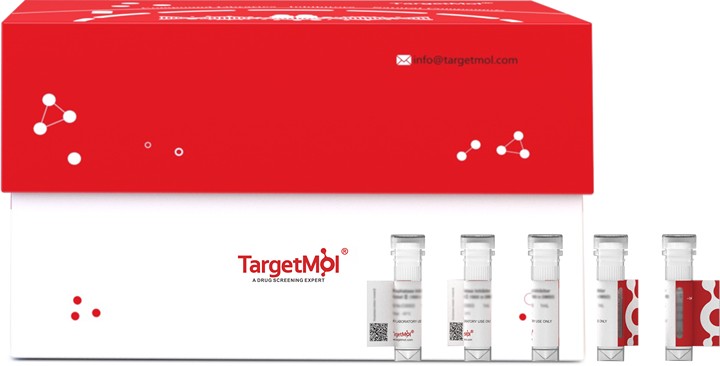- Remove All
 Your shopping cart is currently empty
Your shopping cart is currently empty
ENPP5 Protein, Human, Recombinant (His)
ENPP5 is a member of the nucleotide pyrophosphatase/phosphodiesterase family (NPP). It is a family comprised of dimeric enzymes that catalyze the hydrolysis of phosphate diester bonds. There are seven isoforms in NPP family, some of which prefer nucleotide substrates, some of which prefer phospholipid substrates, and others of which prefer substrates that have not yet been determined. NPP also belongs to the alkaline phosphatase (AP) superfamily of enzymes and they are located in the cell membrane and hydrolyze extracellular phosphate diesters to affect a wide variety of biological processes. ENPP5 belongs to a group of nucleotidemetabolizing ectoenzymes, which regulate the availability of extracellular nucleotides. ENPP5 may play a role in neuronal cell communication. However, it lacks nucleotide pyrophosphatase and lysopholipase D activity. It may also be involved in neuronal cell communication. The amino acid sequence of human ENPP5 is 100%, 88%, and 82% identical to that of chimpanzee, dog and mouse/rat. ENPP5 functions in phospholipid metabolism.

ENPP5 Protein, Human, Recombinant (His)
| Pack Size | Price | Availability | Quantity |
|---|---|---|---|
| 100 μg | $700 | 7-10 days |
Product Information
| Biological Activity | Activity testing is in progress. It is theoretically active, but we cannot guarantee it. If you require protein activity, we recommend choosing the eukaryotic expression version first. |
| Description | ENPP5 is a member of the nucleotide pyrophosphatase/phosphodiesterase family (NPP). It is a family comprised of dimeric enzymes that catalyze the hydrolysis of phosphate diester bonds. There are seven isoforms in NPP family, some of which prefer nucleotide substrates, some of which prefer phospholipid substrates, and others of which prefer substrates that have not yet been determined. NPP also belongs to the alkaline phosphatase (AP) superfamily of enzymes and they are located in the cell membrane and hydrolyze extracellular phosphate diesters to affect a wide variety of biological processes. ENPP5 belongs to a group of nucleotidemetabolizing ectoenzymes, which regulate the availability of extracellular nucleotides. ENPP5 may play a role in neuronal cell communication. However, it lacks nucleotide pyrophosphatase and lysopholipase D activity. It may also be involved in neuronal cell communication. The amino acid sequence of human ENPP5 is 100%, 88%, and 82% identical to that of chimpanzee, dog and mouse/rat. ENPP5 functions in phospholipid metabolism. |
| Species | Human |
| Expression System | HEK293 Cells |
| Tag | C-His |
| Accession Number | Q9UJA9 |
| Synonyms | NPP-5,ectonucleotide pyrophosphatase/phosphodiesterase 5 (putative) |
| Construction | A DNA sequence encoding the human ENPP5 (Q9UJA9) (Met1-Gly429) with a C-terminal polyhistidine tag was expressed. Predicted N terminal: Pro 25 |
| Protein Purity | > 96 % as determined by SDS-PAGE |
| Molecular Weight | 48.1 kDa (predicted); 81 kDa (reducing conditions) |
| Endotoxin | < 1.0 EU/μg of the protein as determined by the LAL method. |
| Formulation | Lyophilized from a solution filtered through a 0.22 μm filter, containing PBS, pH 7.4. Typically, a mixture containing 5% to 8% trehalose, mannitol, and 0.01% Tween 80 is incorporated as a protective agent before lyophilization. |
| Reconstitution | A Certificate of Analysis (CoA) containing reconstitution instructions is included with the products. Please refer to the CoA for detailed information. |
| Stability & Storage | It is recommended to store recombinant proteins at -20°C to -80°C for future use. Lyophilized powders can be stably stored for over 12 months, while liquid products can be stored for 6-12 months at -80°C. For reconstituted protein solutions, the solution can be stored at -20°C to -80°C for at least 3 months. Please avoid multiple freeze-thaw cycles and store products in aliquots. |
| Shipping | In general, Lyophilized powders are shipping with blue ice. |
| Research Background | ENPP5 is a member of the nucleotide pyrophosphatase/phosphodiesterase family (NPP). It is a family comprised of dimeric enzymes that catalyze the hydrolysis of phosphate diester bonds. There are seven isoforms in NPP family, some of which prefer nucleotide substrates, some of which prefer phospholipid substrates, and others of which prefer substrates that have not yet been determined. NPP also belongs to the alkaline phosphatase (AP) superfamily of enzymes and they are located in the cell membrane and hydrolyze extracellular phosphate diesters to affect a wide variety of biological processes. ENPP5 belongs to a group of nucleotidemetabolizing ectoenzymes, which regulate the availability of extracellular nucleotides. ENPP5 may play a role in neuronal cell communication. However, it lacks nucleotide pyrophosphatase and lysopholipase D activity. It may also be involved in neuronal cell communication. The amino acid sequence of human ENPP5 is 100%, 88%, and 82% identical to that of chimpanzee, dog and mouse/rat. ENPP5 functions in phospholipid metabolism. |
Dose Conversion
Sci Citations
Calculator
Tech Support

Copyright © 2015-2025 TargetMol Chemicals Inc. All Rights Reserved.


